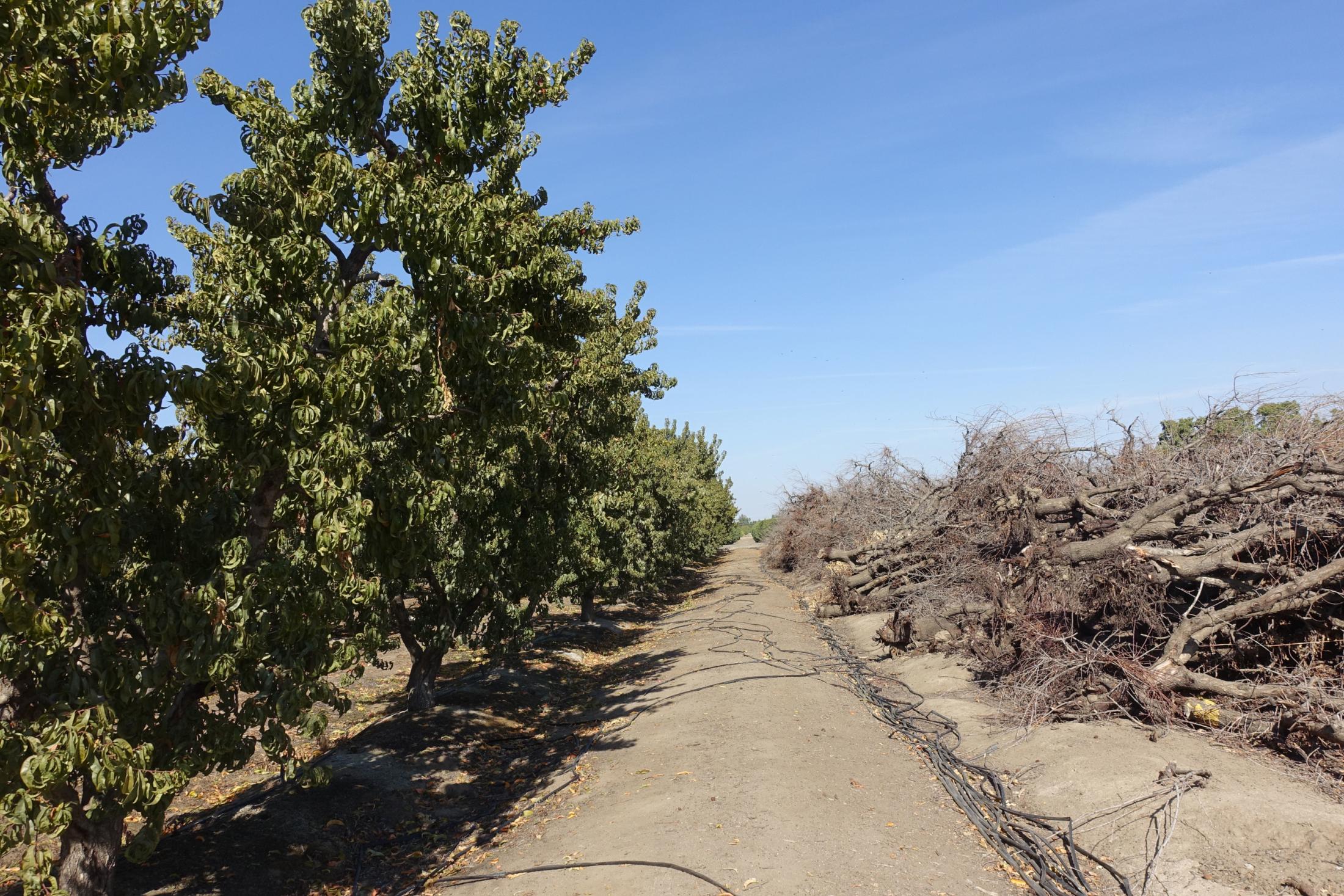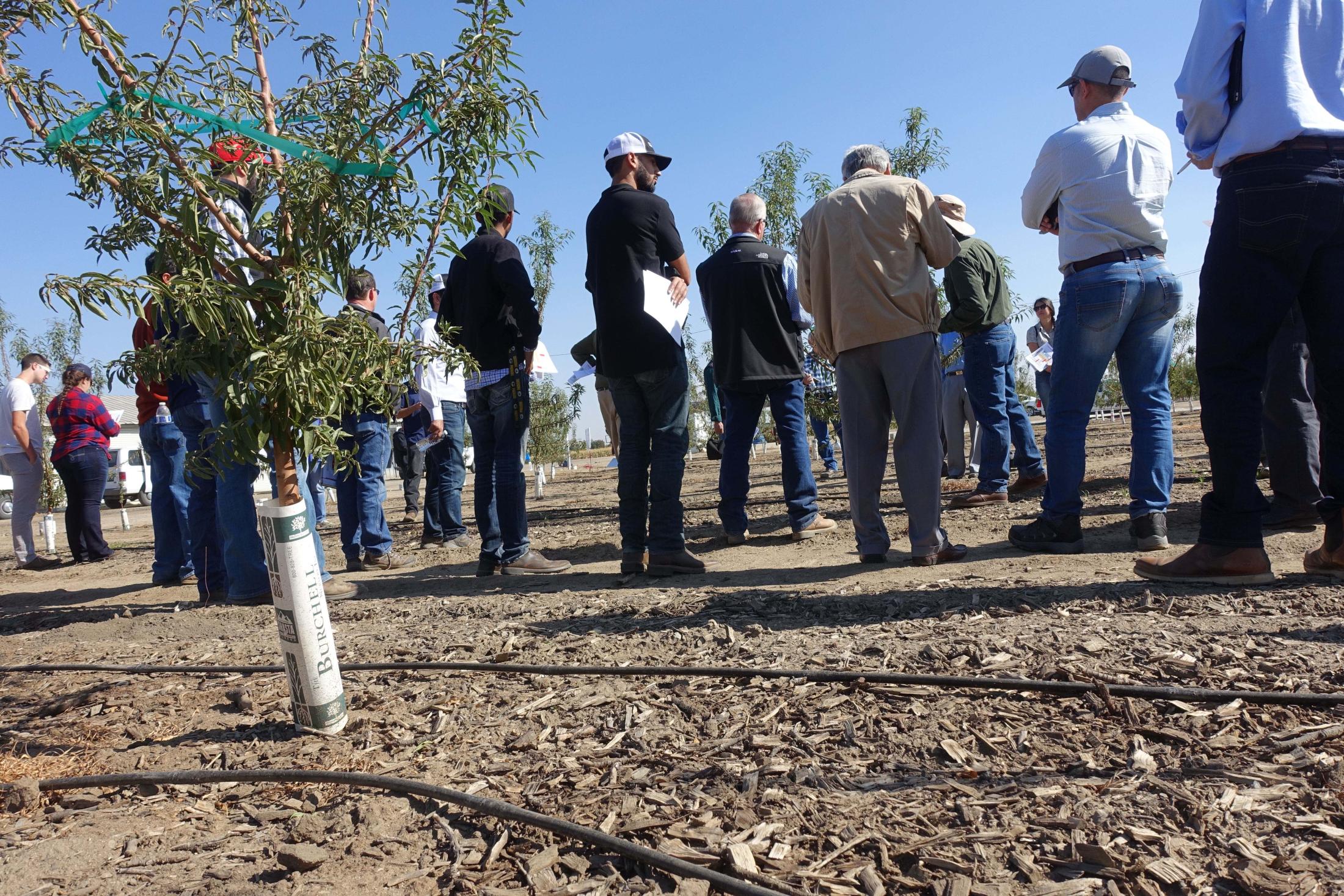At the end of an orchard’s productive lifetime, the almond grower must make a decision: what to do with the old trees, once they are removed, to clear space for a new orchard?

Whole-orchard recycling (WOR) is the on-site grinding or chipping of whole trees during orchard removal, and incorporation of the ground or chipped biomass into the topsoil prior to replanting.
Recent drought conditions and high almond prices have encouraged higher rates of orchard turnover, especially for less-productive orchards. In the past, the best options for removing and disposing of the old trees in California were to burn them in the field, or to send the trees to biomass power generation plants.
However, air quality regulations have made burning permits increasingly difficult and expensive for growers to obtain. And since 2015, because of falling natural gas prices and other factors, a large number of California’s biomass power generation plants have closed.
As a result, growers have few options for disposing of their old almond trees, and the Almond Board of California estimates that thirty to forty thousand acres of old almond orchards will be removed annually over the next decade.
WOR could provide a sustainable method of tree removal that could enhance both air and soil quality.

If whole orchard recycling is widely adopted, we expect that the practice could increase the sustainability and resilience of California almond production and help reduce the emission of greenhouse gases that contribute to climate change.
UC-led research has identified significant advantages to WOR in increasing the health and productivity of the subsequent replanted orchard and soils while sequestering carbon, reducing GHG emissions, improving soil structure and increasing water use efficiency.
Some California growers have begun using WOR in their operations, and UC researchers are working toward understanding the benefits of this practice and how they may stack up against the costs of implementing WOR on a commercial scale.